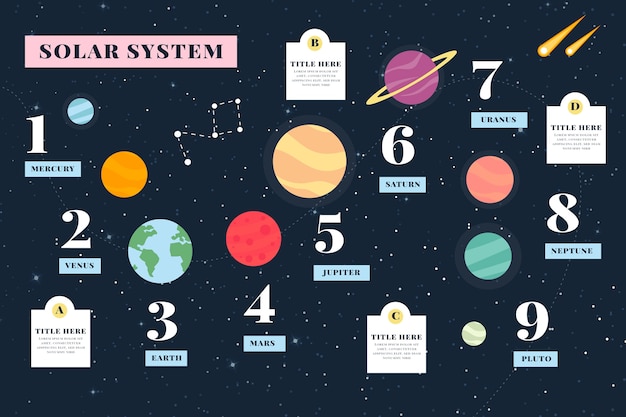Astronomy Facts – Exploring the Wonders of the Universe

The universe is so vast that even with the most advanced telescopes, we have only scratched the surface of what lies beyond.
There are approximately 100 billion stars in our Milky Way galaxy alone.
The moon is not completely round, but instead, it is shaped like a slightly squashed sphere.
The sun is so massive that it accounts for 99.86% of the total mass in our solar system.
The largest volcano in our solar system is found on Mars and is called Olympus Mons, standing three times the height of Mount Everest.
There are more stars in the universe than there are grains of sand on Earth.
The Great Red Spot on Jupiter is actually a giant storm that has been raging for at least 400 years.
Saturn’s rings are composed of countless icy particles, some as small as a grain of sand and others as large as a mountain.
The shortest day in the year, known as the winter solstice, occurs around December 21st and marks the beginning of winter in the Northern Hemisphere.
The speed of light is the fastest speed possible and is approximately 299,792 kilometers per second.
The Hubble Space Telescope can see back in time, capturing images of galaxies that existed billions of years ago.
The largest known black hole is called TON-618 and has a mass equivalent to 66 billion suns.
The temperature inside the Sun can reach astonishingly hot temperatures of about 15 million degrees Celsius (27 million degrees Fahrenheit).
Astronomy Facts – Exploring the Wonders of the Universe part 2
The Andromeda Galaxy, our closest galactic neighbor, is on a collision course with the Milky Way and is expected to merge with it in about 4 billion years.
The North Star, also known as Polaris, has been used by navigators for centuries as a guide due to its stable position in the sky.
The light emitted by stars takes thousands or even millions of years to reach us, which means that some of the stars we see may have already died.
The force of gravity is responsible for keeping the planets in our solar system orbiting around the sun.
The concept of black holes was first proposed by Albert Einstein in his theory of general relativity.
The first exoplanet, a planet outside our solar system, was discovered in 1992.
The red color of Mars is due to iron oxide, also known as rust, covering its surface.
The hottest place in the solar system is not the sun, but rather the atmosphere of Venus, where temperatures can reach up to 900 degrees Fahrenheit (475 degrees Celsius).
The largest moon in our solar system is Ganymede, which is even bigger than the planet Mercury.
The International Space Station orbits the Earth at a speed of approximately 28,000 kilometers per hour (17,500 miles per hour).
A year on Venus is shorter than its day, meaning that Venus completes its rotation around its axis faster than it completes an orbit around the sun.
Each galaxy is believed to contain billions of stars, along with countless planets and other celestial objects.
The theory of the Big Bang suggests that the entire universe began from an incredibly hot and dense state over 13 billion years ago.
The study of astronomy can help us understand the origins of the universe and our place within it.
The majority of the elements found on Earth, including carbon, oxygen, and iron, were created through nuclear fusion processes inside stars.
The concept of a light-year is a measure of distance, representing the distance light travels in a year, which is approximately 9.5 trillion kilometers (5.9 trillion miles).
The most distant object observed in the universe is a galaxy called GN-z11, located over 13.4 billion light-years away.
The Great Pyramid of Giza is aligned with remarkable accuracy to true north, suggesting an early understanding of astronomy by the ancient Egyptians.
Space-time is not a static fabric, but rather it can be warped and distorted by massive objects such as stars and black holes.
The term astronomy originates from the Greek words astron, meaning star, and nomos, meaning law, together meaning law of the stars.
In 1977, the Voyager 1 spacecraft captured an image known as the Pale Blue Dot, showing Earth as a tiny speck in the vastness of space.
The study of astronomy has led to numerous technological advancements, including satellite communication, GPS navigation, and weather forecasting.
There is a proposed theory that suggests the existence of dark matter and dark energy, which together account for about 95% of the total mass-energy content of the universe.
The zodiac constellations are a set of 12 constellations that lie along the ecliptic, the apparent path of the Sun across the sky throughout the year.
The Crab Nebula is a remnant of a supernova explosion observed by Chinese astronomers in the year 1054.
The concept of a wormhole, a theoretical shortcut through space-time, has been popularized in science fiction but is still purely hypothetical.
The phenomenon known as the Northern Lights, or Aurora Borealis, occurs when charged particles from the Sun collide with Earth’s atmosphere, creating beautiful displays of light.
The concept of time dilation, as described by Einstein’s theory of relativity, means that time can pass at different rates depending on the speed and gravitational field of an object.
The concept of a habitable zone, also known as the Goldilocks zone, refers to the distance from a star where conditions could potentially support life as we know it.
The closest black hole to Earth, named HR 6819, is located just 1,200 light-years away in the constellation Telescopium.
The concept of the Great Attractor refers to an unknown gravitational anomaly that seems to be pulling our Milky Way galaxy and thousands of others towards it.
Many ancient civilizations, including the Mayans and Egyptians, incorporated astronomy into their religious and cultural practices, using celestial events for navigation, agriculture, and timekeeping.